The Xpeng G7 electric SUV launched in China with a starting price of 195,800 yuan (27,325 USD). This five-seat family driver offers a single electric motor for 292 hp, up to 702 km of range, an 87-inch AR-HUD from Huawei, and 2,250 TOPS of computing power.
The Xpeng G7 is the mainstream electric crossover that has become the seventh model in the brand’s current lineup. It entered the domestic market to rival the Tesla Model Y and the recently launched Xiaomi YU7. Previously, the Xpeng G7 attracted 10,000 pre-orders in 46 minutes after the official release. On July 3, this SUV entered the Chinese market.
Core information about the Xpeng G7
The Xpeng G7 is a mid-size crossover with dimensions of 4892/1925/1655 mm. Its wheelbase reaches 2,890 mm. The G7 adopts the second-generation “X Face” design language. It has two thin running light units joined by an LED strip. The car’s headlights sit lower in the front bumper. The new SUV adopts a closed front end with a trapeze-shaped air intake. From the back, this model has a distinguishing “Star Ring” taillight unit and a roof spoiler. The Xpeng G7 offers six body colors: dark gray, silver, white, black, beige, and green.
Thanks to a low beltline and hidden door handles, the Xpeng G7 has a drag coefficient of 0.238 Cd. For clarity, the Tesla Model Y has a drag coefficient of 0.230 Cd. Lower Cd number translates into quieter rides and lower energy consumption on highways.
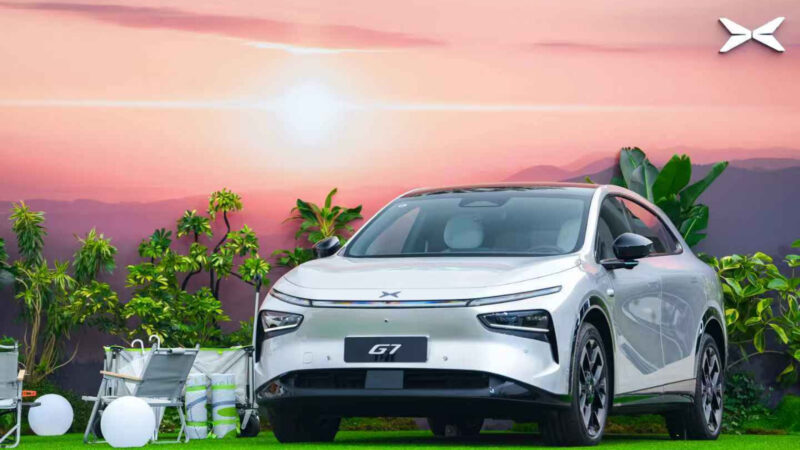
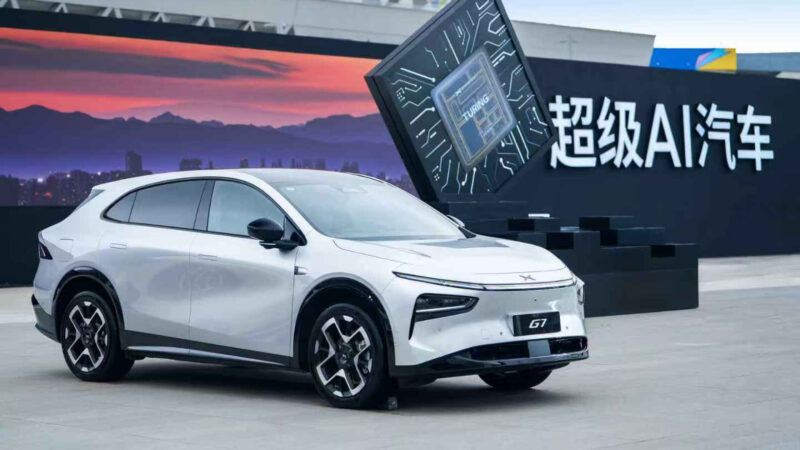
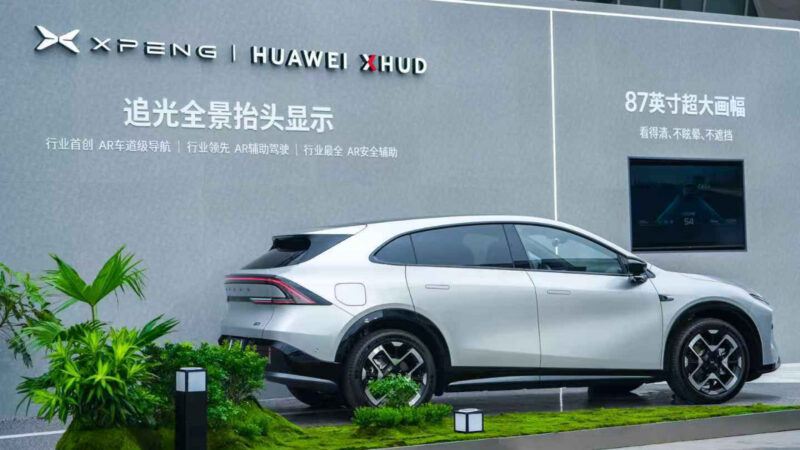
The Xpeng G7 has a small 42-liter trunk under the hood. The main trunk of this model offers 819 L as standard. With rear seats folded, this number reaches 2,277 L. Xpeng officials say it is enough to fit 37 20-inch suitcases. A 120-liter storage space hides under the trunk’s floor.
The Xpeng G7 offers a single drive type – RWD. Its electric motor has a peak power of 218 kW (292 hp). The G7 speeds up to 100 km/h in 6.5 seconds. It stops from 100 km/h in 35.8 meters.
Two LFP battery options are available for this EV. The first has a capacity of 68.5 kWh. And the second pack has offers up to 80.8 kWh. The car can drive 602 – 702 km of CLTC range with 18-inch wheels and 577 – 677 km on 20-inch wheels. The Xpeng G7 adopts the 5C charging technology that allows it to charge 436 km in 10 minutes. The car’s energy consumption is 10.8 kWh per 100 km. The Xpeng G7 also supports the V2L function with a power of 6 kW.
The Xpeng G7’s chassis is oriented towards comfort with an AI system that analyses the road conditions ahead and adapts in real time. Its reaction speed is 200 ms. Xpeng claims it is more comfortable than the suspension system of the Mercedes-Benz GLE and the Tesla Model Y. Another benefit of the Xpeng G7 is a quieter ride.
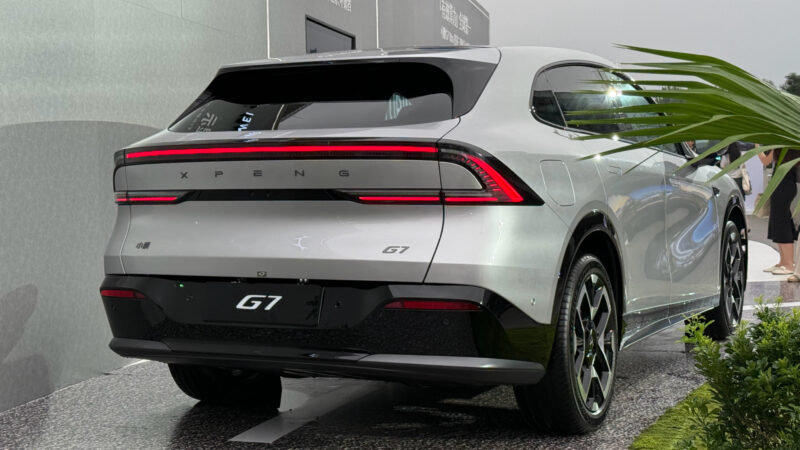
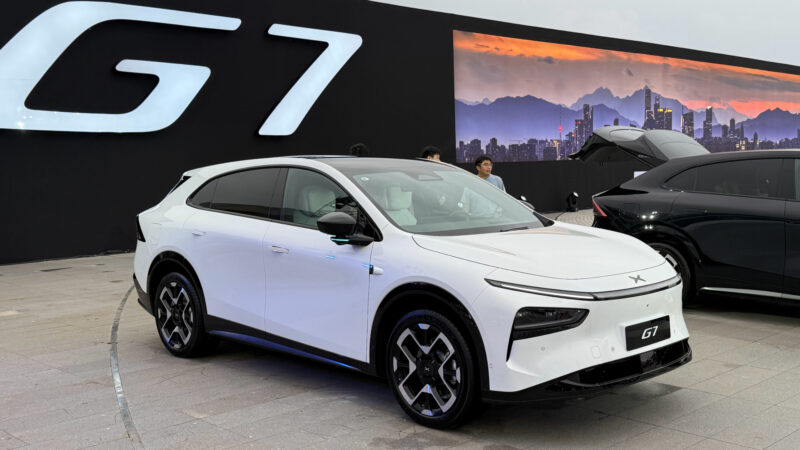
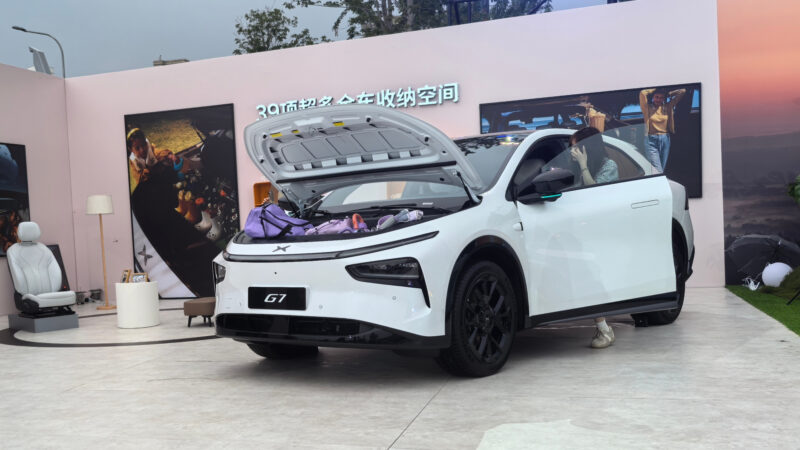
Xpeng G7 interior and features
The Xpeng G7’s interior adopts a clean and simple design. The car has no physical buttons on the center console. Instead, the G7 boasts a large 15.6-inch floating touchscreen powered by the Snapdragon 8295 chip. The G7 has an 87-inch augmented reality head-up display developed jointly by Huawei & Xpeng that replaces a conventional instrument panel. It supports AR navigation, intersection guidance, dynamic lane change prompts, and other functions.
Other fine features of the Xpeng G7’s cabin are dual 50W wireless phone charging pads and a 7.1.4 sound system with 20 speakers. The car boasts a large sunroof, a 256-color ambient lighting, a 9-inch streaming rear-view mirror, and a password-protected 5.9-liter glovebox. Another nice feature of the Xpeng’s vehicle is a deep 10.1-liter storage space under the armrest. The car has 39 storage spaces. Four seats support heating, ventilation, and massage functions.
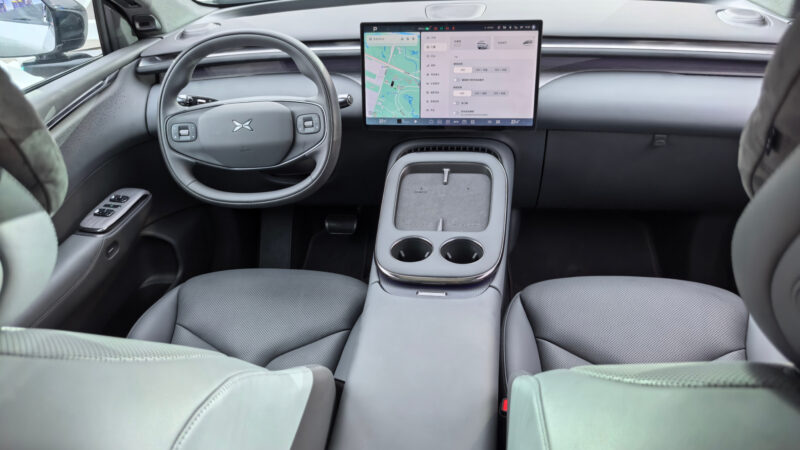
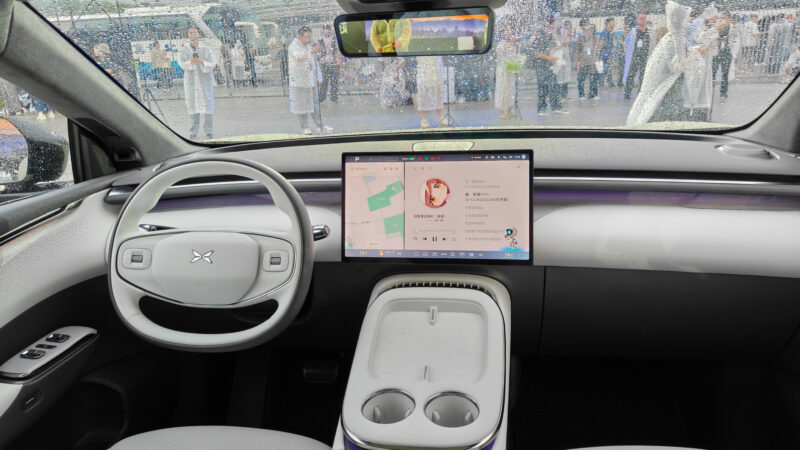
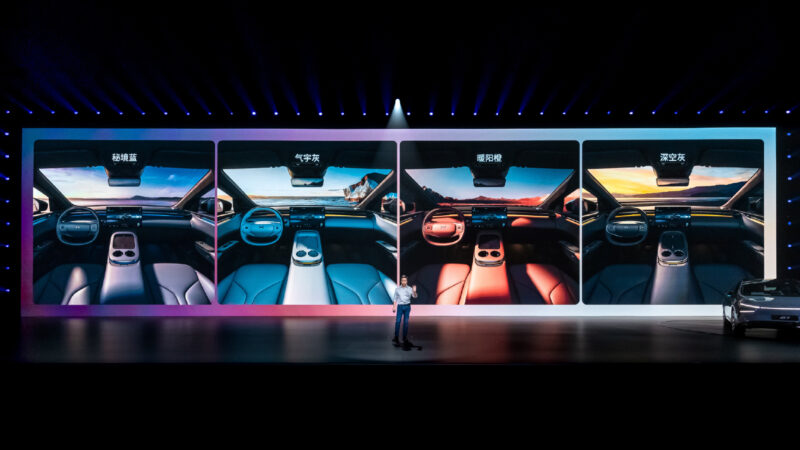
The interior of the G7 offers four color options: blue, light gray, orange, and dark gray. Headroom is 48.3% more than the Model Y in the front row. Shoulder space for the front-row passengers reaches 1,461 mm (33 mm more than the Tesla Model Y). It is understandable since the G7 is just a bigger car. The front elbow space is 1,523 mm, and the hip space is 1,426 mm. The occupancy rate of the G7 is 88%, and the interior space volume is 4.47 cubic meters.
The second-row passengers of the Xpeng G7 also have access to some high-end features. The first one is the 8-inch touchscreen that allows passengers to adjust the climate control and infotainment system. Other highlights include a folding table for the rear right passenger and a wireless phone charging pad with a cooling function in the armrest. The G7’s interior adopts real wood, metal, and leather. It also has a microfiber-covered ceiling.
One of the core Xpeng G7’s features is the driving assistance system XNGP. The G7 Ultra trim is powered by three Turing AI chips. These processors were developed by Xpeng. Their total computing power to 2,250 TOPS. Xpeng says it is the L3 driving assistance mode because it supports online learning and a vision-language model. The entry-level Xpeng G7 adopts dual Nvidia Orix-X chips for 508 TOPS. The L3 driving system will become available for the G7 Ultra in December 2025 via OTA update.
Previously, Xpeng completed AEB static pedestrian & target vehicle tests at a speed of 130 km/h. The car completed the same AEB tests at 120 km/h at night. Finally, the Xpeng G7 stopped at 80 km/h in a tunnel, which is one of the most difficult scenarios for the driving assistance system. It is worth mentioning that the Xpeng G7 has eleven cameras and three mm-wave radars.
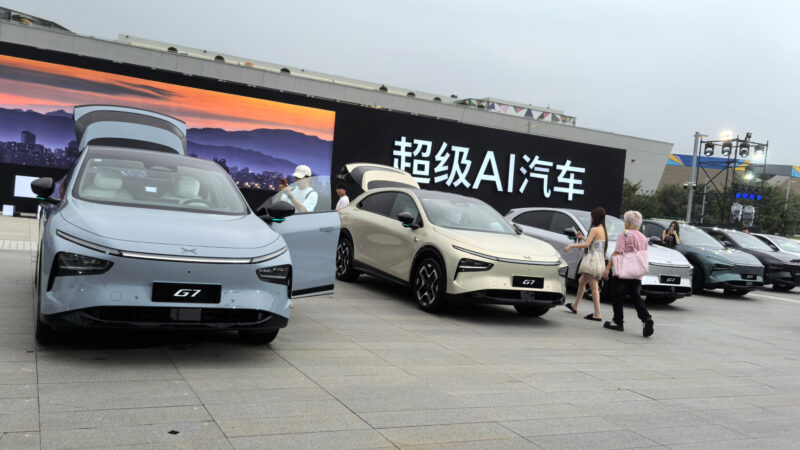
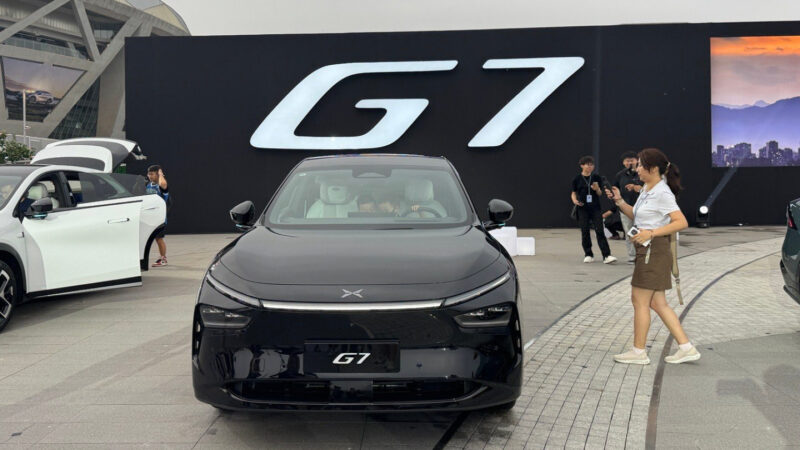
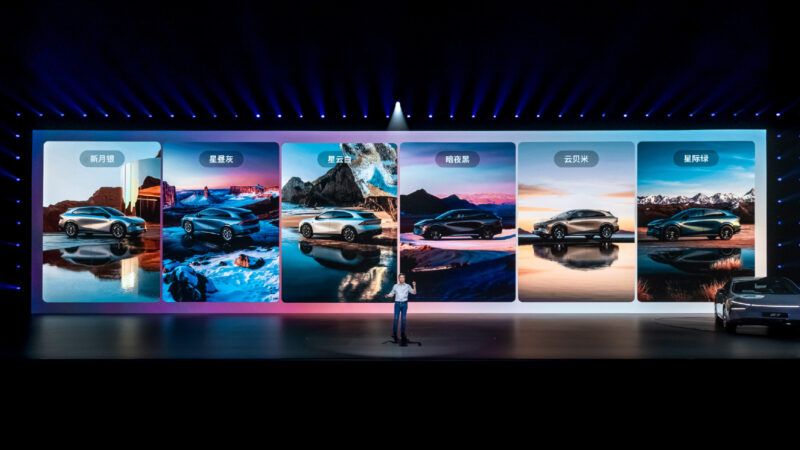
Xpeng G7’s safety meets the C-NCAP 2024 five-star standard. Its body boasts a torsional rigidity of 41,600 Nm/degree. The G7’s battery has a protective shell made of 1,500 MPa steel.
Xpeng G7 prices
The top-trim Xpeng G7 Ultra with 702 km of CLTC range costs 225,800 yuan (31,510 USD). Customers who place an order for the G7 Ultra before July 31 will enjoy free Nappa leather, power door handles, and other benefits. The Xpeng G7 Max crossover with 702 km range costs 205,800 yuan (28,720 USD). And the G7 Max with 602 km range starts at 195,800 yuan (27,325 USD).
For comparison, we listed prices of some Xpeng G7’s rivals below:
- Xiaomi YU7: 254,500 – 329,900 yuan (35,520 – 46,040 USD)
- Tesla Model Y: 263,500 – 313,500 yuan (36,770 – 43,750 USD)
- Zeekr 7X: 229,900 – 269,900 yuan (32,090 – 37,670 USD)
- Aito M5: 229,800 – 279,800 yuan (32,070 – 39,050 USD)
- Luxeed R7: 249,800 – 339,800 yuan (34,860 – 47,420 USD)


